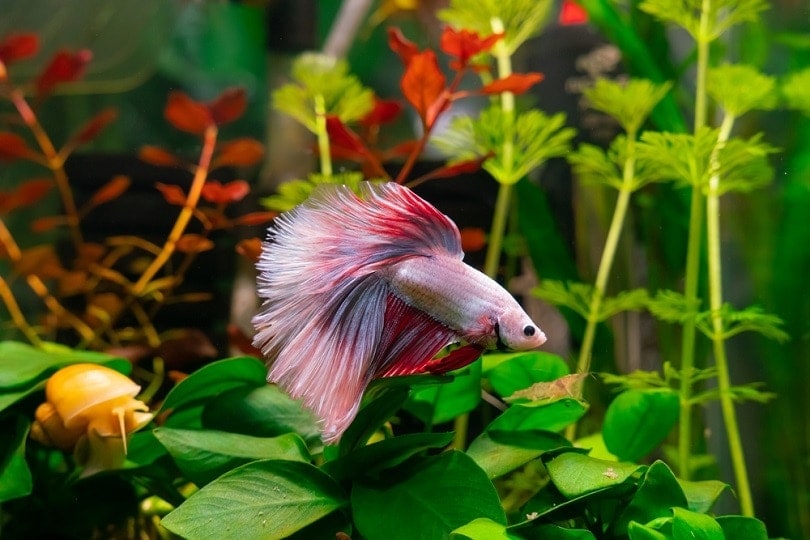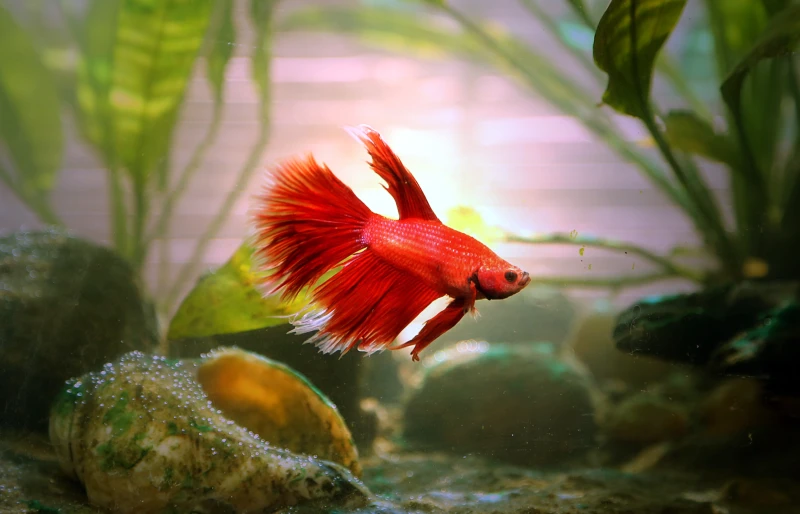Giant Betta Fish: Care Guide, Pictures, Varieties & Lifespan

Updated on
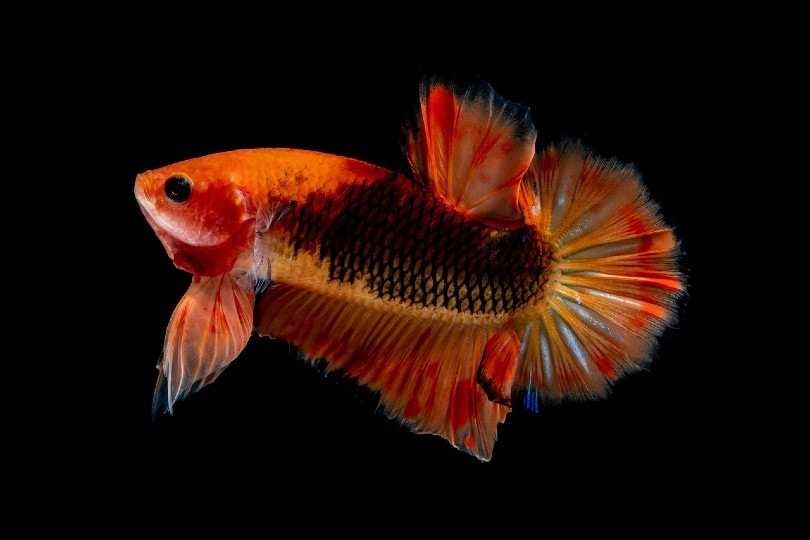
Click to Skip Ahead
Quick Facts about Giant Betta
| Species Name: | Betta anabantoides |
| Family: | Osphronemidae |
| Care Level: | Moderate |
| Temperature: | 77–86˚F |
| Temperament: | Peaceful, broody |
| Color Form: | Multiple color combinations |
| Lifespan: | 3–5 years |
| Size: | 2.5–5 inches |
| Diet: | Carnivore |
| Minimum Tank Size: | 10 gallons |
| Tank Set-Up: | Soft, acidic, freshwater planted tanks with low water flow |
| Compatibility: | Giant Betta of the opposite sex, other fish of similar size with similar water needs |
Giant Betta Overview
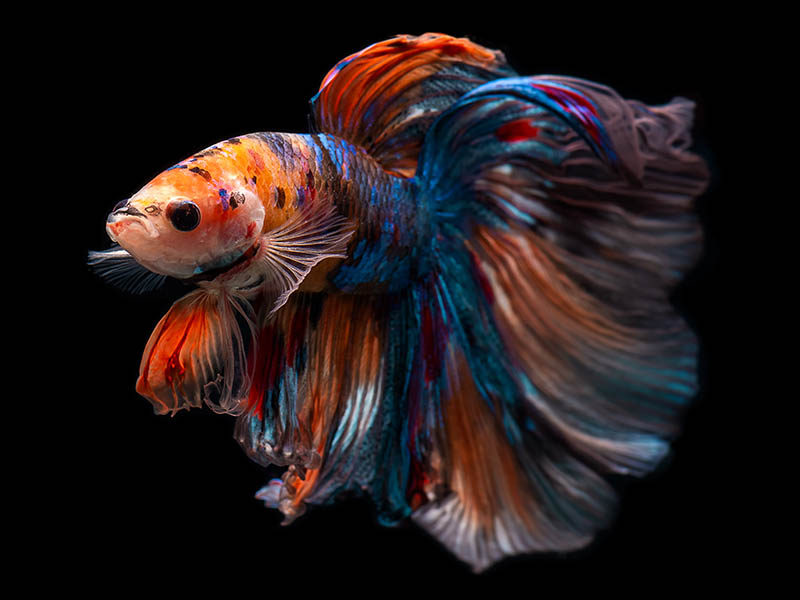
The Giant Betta is the result of careful selective breeding of Betta fish with a genetic tendency toward gigantism. They have the sturdy body of a Plakat Betta in a larger package. These fish are not particularly popular in the aquatics trade at this point, but they are growing in popularity due to their calm demeanor and eye-catching size.
Giant Bettas are often confused with the King Betta. However, King Bettas are a variety of Betta splendens, while Giant Bettas are a separate species entirely. King Bettas look like most other varieties of Betta splendens and do not get larger than others. Even small Giant Bettas are often larger than large Betta splendens specimens. King Bettas have the normal semi-aggressive temperament of other Bettas, while the Giant Betta tends to be a peaceful, laid-back fish that seems to enjoy living in pairs.
Giant Bettas seem to be slightly more susceptible to illnesses related to poor water quality than Betta splendens usually are. This makes Giant Bettas a better fit for experienced fish keepers than beginners. With proper husbandry, though, these fish can be a fun undertaking for someone committed to their care.
How Much Do Giant Bettas Cost?
Since Giant Betta fish are not common, they tend to be more expensive than you would spend on a Betta at the pet store. Expect to spend $40-60 or more on the fish itself. These fish are difficult to find and typically can only be purchased through online breeders and retailers, so expect to spend $30 or more on shipping expenses on top of the cost of the fish.
Typical Behavior & Temperament
Giant Bettas are laid-back fish that are not overly active. They tend to be more peaceful than the semi-aggressive Betta splendens. It is recommended to avoid keeping male Giant Bettas together due to the risk of aggression, especially during breeding or brooding. However, they can usually be kept in opposite sex pairs. They also tend to be peaceful enough for calm community tanks, like with Tetras and Rasboras.
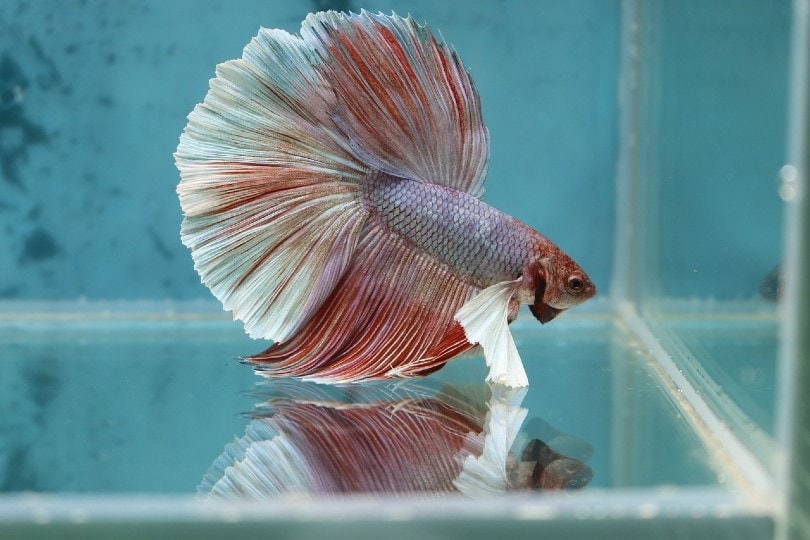
Appearance & Varieties
Giant Bettas have the same stout body type that Plakat Bettas tend to have. They are closer in appearance to wild Betta fish and tend to have shorter fins than most Betta splendens varieties, apart from the Plakat Betta. They do have fins of moderate length that trail delicately behind them. Like Plakat Bettas, Giant Betta females have shorter, stubbier fins than males.
They are available in most color combinations seen in Betta splendens varieties. Since they are less common and not as overbred as smaller Betta varieties, they may have slightly less interesting colors. However, they are still available in bright blues, purples, reds, and greens, as well as more natural colors like tan, black, and cream.
How to Take Care of Giant Bettas
Habitat, Tank Conditions & Setup
Tank Size
Technically, a single Giant Betta could be kept in a tank as small as 5 gallons. However, it is recommended to keep them in a tank that is at least 10 gallons. A male and female pair can be kept in a 10-gallon tank together.
Water Temperature & pH
These fish prefer tropical temperatures and thrive in a temperature range from 77–86˚F. They prefer acidic water, and some people recommend keeping them in water with a pH as low as 4.5. Generally, though, the recommendation is a pH of 5.0–6.5. They can thrive in a neutral pH as long as it is stable.
Substrate
The substrate you choose for your Giant Betta fish is not of any particular importance. It should allow plants to form root systems, but Giant Bettas rarely scavenge in the substrate.
Plants
Giant Betta fish will appreciate a well-planted tank, especially when the plants have large, broad leaves. Choose plants that can thrive in the soft, acidic environment the Giant Betta prefers. Anubias and Java ferns often thrive in this environment.
Lighting
There are no specific lighting needs aside from a normal day/night cycle. Natural lighting is adequate for the preferences of the Giant Betta. The light in the tank should be powerful enough to support plant growth.
Filtration
Giant Bettas are weak swimmers, like Betta splendens. They require calm water with minimal flow. Filtration should be adequate enough to maintain high water quality without producing too much current.

Are Giant Bettas Good Tank Mates?
These large fish can be good tank mates with other laid-back fish, like Tetras. Curious and highly active fish, like Guppies, may lead to stress or aggression. When first introducing a Giant Betta into a community tank, it’s important to closely monitor the tank for the first few weeks to ensure no aggression or bullying is occurring from or toward the Giant Betta.
Giant Betta fish seem to enjoy living in opposite-sex pairs. Unlike male Betta splendens, male Giant Bettas are often gentle and laid-back enough to safely keep with a female without risking her safety. Their peaceful nature also means that you may have better luck with a sorority than you would with Betta splendens.
What to Feed Your Giant Betta
Giant Bettas are carnivorous, so they do not require dietary supplementation of plant matter, like fresh veggies. They should receive a high-quality Betta or carnivore-specific floating pellet food as the base of their diet. Their diet should be supplemented with meaty foods. This can come from fresh, thawed frozen, or freeze-dried sources.
Avoid feeding Giant Betta fish foods with hard shells that may be difficult to properly digest, like mealworms. They will happily eat foods like bloodworms and daphnia. You can also offer live foods from safe sources to your Giant Betta. This can be chopped earthworms or nightcrawlers, or live red wigglers. Ensure any live food you offer has not had any exposure to pesticides or other dangerous chemicals.
Keeping Your Giant Betta Healthy
The most common health problem seen in Giant Bettas is illnesses related to poor water quality. This can include parasites, like ich, or bacterial and fungal infections, like fin rot. To prevent these problems, maintain the water quality in the tank. Perform regular water changes and closely monitor water parameters to ensure no problems arise. Also, make sure the pH and temperature stay in a safe range and are stable.
Another medical issue frequently seen in Giant Betta fish is problems related to the digestive system. They are prone to constipation and digestive difficulties, with some even dying from these problems. It is important to ensure your Giant Betta receives a high-quality diet with no inappropriate foods. This will help maintain the health of the digestive system.
Breeding
Ideally, you should provide a breeding tank separate from the regular home of your Giant Bettas if you intend to breed them. Giant Betta fish are paternal mouthbrooders, which means the males carry fertilized eggs in their mouths until they hatch. After spawning, the male will scoop up the fertilized eggs into his mouth. If there are loose eggs left behind, the female will often scoop them up and spit them toward the male for him to capture. Aside from this, the female will take no interest in caring for the eggs or the fry.
While carrying the eggs, the male may become broody and less tolerant of curious tankmates, especially other Giant Bettas, including the female. Once the eggs begin to hatch after a few days, the male will allow the fry to swim from his mouth. The newly hatched fry will begin eating shortly after hatching and can be offered very small foods like infusoria and baby brine shrimp.
Are Giant Bettas Suitable For Your Aquarium?
Giant Betta fish are a great alternative to the smaller Betta splendens if you are interested in a larger or more peaceful fish. These fish will definitely draw interest to your tank because of their size and coloration. However, they are relaxed and peaceful, which means they are often appropriate for certain types of community tanks. Be prepared to provide a high-quality diet and great water quality. With proper care and high water quality, Giant Bettas can live up to 5 years, and some people report them exceeding 5 inches in length.
Looking for more Betta varieties? Take a look at our articles on:
Featured Image Credit: nicefishes, Pixabay

